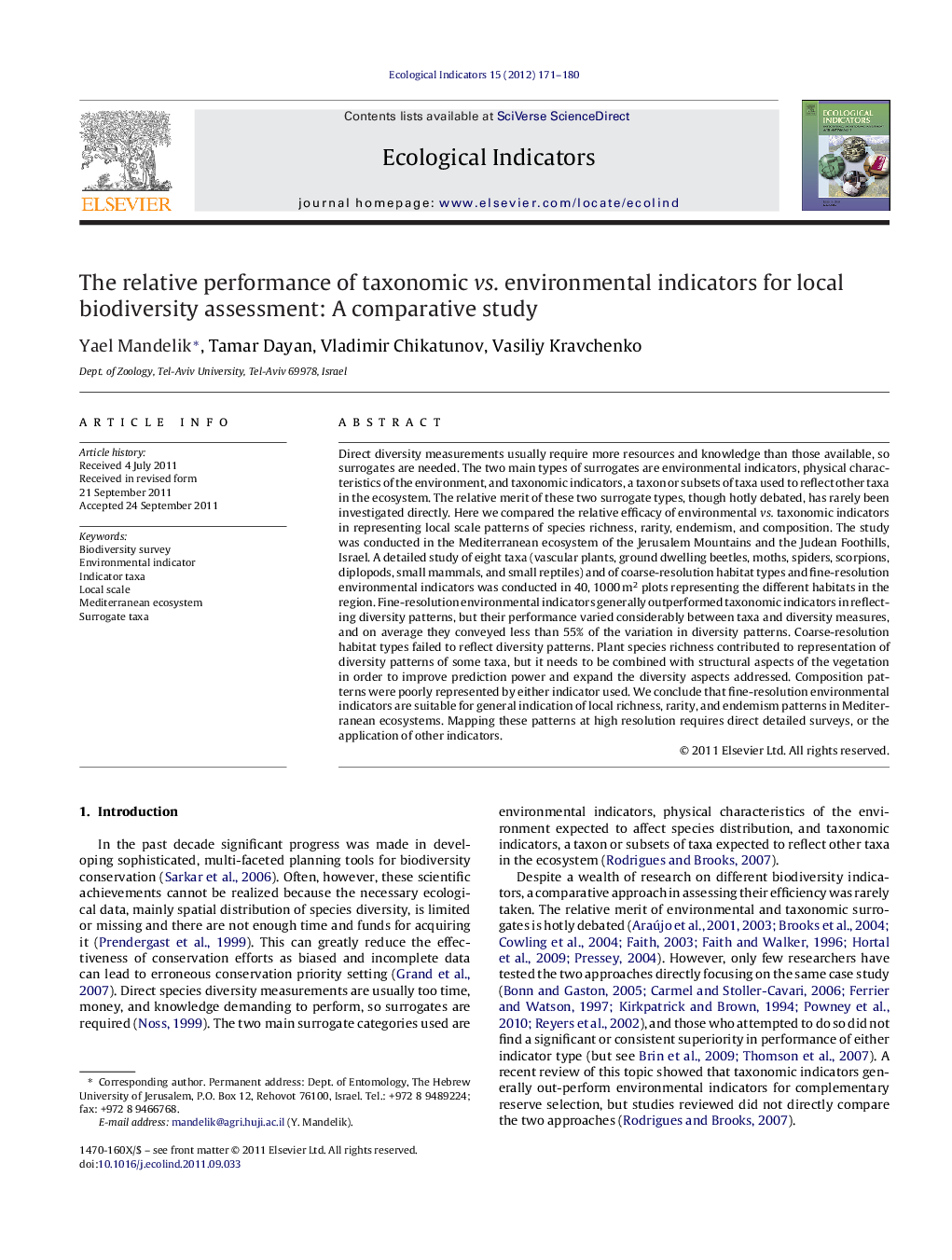| Article ID | Journal | Published Year | Pages | File Type |
|---|---|---|---|---|
| 4373927 | Ecological Indicators | 2012 | 10 Pages |
Direct diversity measurements usually require more resources and knowledge than those available, so surrogates are needed. The two main types of surrogates are environmental indicators, physical characteristics of the environment, and taxonomic indicators, a taxon or subsets of taxa used to reflect other taxa in the ecosystem. The relative merit of these two surrogate types, though hotly debated, has rarely been investigated directly. Here we compared the relative efficacy of environmental vs. taxonomic indicators in representing local scale patterns of species richness, rarity, endemism, and composition. The study was conducted in the Mediterranean ecosystem of the Jerusalem Mountains and the Judean Foothills, Israel. A detailed study of eight taxa (vascular plants, ground dwelling beetles, moths, spiders, scorpions, diplopods, small mammals, and small reptiles) and of coarse-resolution habitat types and fine-resolution environmental indicators was conducted in 40, 1000 m2 plots representing the different habitats in the region. Fine-resolution environmental indicators generally outperformed taxonomic indicators in reflecting diversity patterns, but their performance varied considerably between taxa and diversity measures, and on average they conveyed less than 55% of the variation in diversity patterns. Coarse-resolution habitat types failed to reflect diversity patterns. Plant species richness contributed to representation of diversity patterns of some taxa, but it needs to be combined with structural aspects of the vegetation in order to improve prediction power and expand the diversity aspects addressed. Composition patterns were poorly represented by either indicator used. We conclude that fine-resolution environmental indicators are suitable for general indication of local richness, rarity, and endemism patterns in Mediterranean ecosystems. Mapping these patterns at high resolution requires direct detailed surveys, or the application of other indicators.
